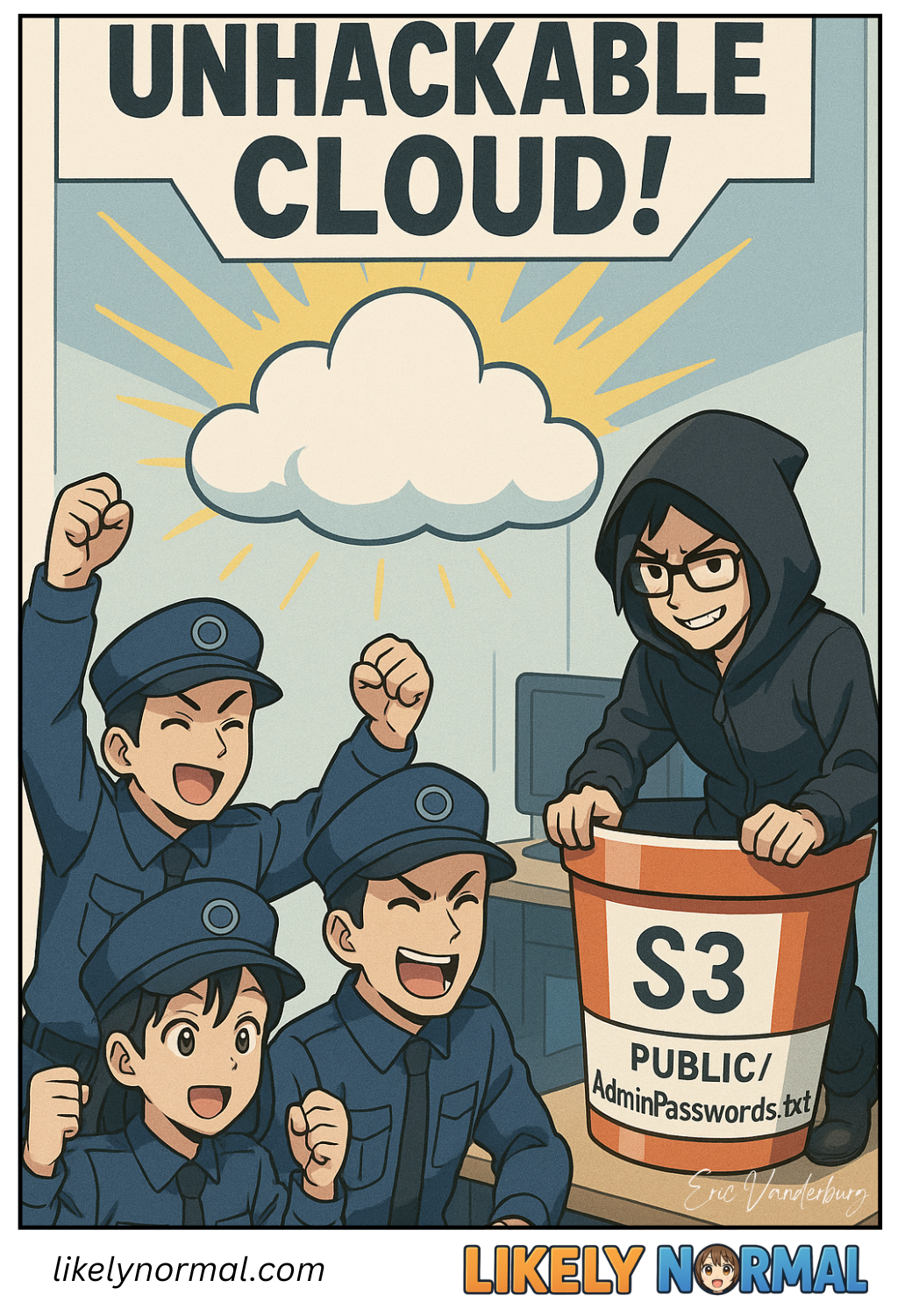Cloud Insecurity
The unhackable cloud is tech’s most adorable urban myth, right up there with “the printer will work if I yell at it” and “I’ll remember this password later.” Newsflash: just because your data is floating in the digital sky doesn’t mean it’s safe from prying eyes. In fact, that “secure” cloud environment is often about as impenetrable as a screen door on a submarine, especially when someone (read: you) leaves the virtual keys in the ignition. Case in point: the infamous publicly accessible S3 bucket—tech’s version of taping a “Steal Me!” sign to your sensitive files, like “AdminPasswords.txt” (because who needs subtlety?).
Here’s the dirty little secret of cloud security: the cloud provider’s job is to make sure the building doesn’t collapse, but your job is to stop leaving all the windows open and the safe combo written on a Post-it. Sure, AWS isn’t going to get hacked like it’s 1999, but your misconfigured settings? That’s basically a welcome mat for hackers, complete with a complimentary “Data Theft Buffet—All You Can Steal!” sign. The cloud isn’t magic; it’s just someone else’s computer, and if you treat it like a digital junk drawer, don’t be shocked when your “secret” recipes (or worse, customer data) end up on the dark web next to a tutorial on How to Hack Misconfigured Buckets for Dummies.
So next time someone tells you “It’s fine, it’s in the cloud!”, remind them: so are rainclouds, and nobody trusts those to keep anything dry.

Discussion ¬